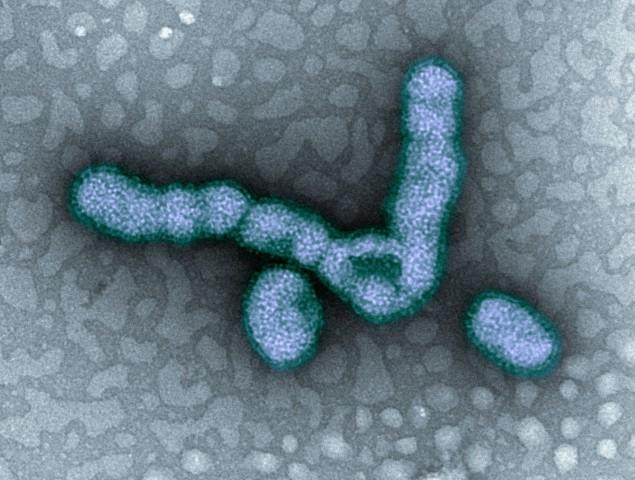Japanese researchers yesterday described two H3N2 flu viruses with mutations that may increase resistance to the new flu antiviral baloxavir marboxil (Xofluza), approved by the US Food and Drug Administration (FDA) in October, a development they say bears watching.
And in another article, US researchers reported on efforts already under way to watch for signs of resistance to the drug as it enters the US market. Both studies were published yesterday in the latest issue of Eurosurveillance.
Baloxavir is the first novel flu treatment approved by the FDA since it cleared oseltamivir and zanamivir, both neuraminidase inhibitors, in 1999. The FDA approved baloxavir in October 2018.
Sporadic resistance to osteltamivir has been reported over the years, and experts have said flu drugs with different mechanisms of action are needed to provide more options for treating resistant flu.
The new drug, discovered by Japan-based Shionogi and developed by Roche, is a single-dose treatment approved in the United States for uncomplicated flu in patients ages 12 and older.
Japan finds resistance in 2 children
Japanese researchers who have been monitoring baloxavir's susceptibility to circulating flu strains said that, during phase 2 and 3 trials, some patients who got baloxavir and were infected with 2009 H1N1 and H3N2 strains containing certain substitutions had longer virus shedding and time to symptom alleviation. The patterns they saw suggested that the incidence of reduced susceptibility to baloxavir was higher than to oseltamivir.
The drug was approved in Japan in February 2018 and became available the following month.
Nationwide monitoring identified H3N2 viruses carrying the PA138T baloxavir resistance mutation, both in December 2018 from children who had been treated with the drug. Genetic sequencing revealed that the two mutated viruses originated from different lineages, hinting at no human-to-human transmission.
"Our findings indicate that these viruses emerged under the selective pressure of baloxavir marboxil," the researchers wrote. During the same time period, the team found no viruses with reduced susceptibility to neuraminidase inhibitors.
"These observations suggest that the emergence of PA I38T mutant viruses may increase as the use of baloxavir marboxil increases in the 2018/19 influenza season," the team wrote. "Therefore, the baloxavir susceptibility of influenza viruses should be closely monitored."
The authors added that a World Health Organization working group is collecting more data to establish criteria to define baloxavir susceptibility.
US establishes baseline
In the other Eurosurveillance study, a research team led by the US Centers for Disease Control and Prevention (CDC) assessed baloxavir's susceptibility to seasonal viruses during the previous two flu seasons, before the drug entered the US market, with an eye toward establishing baloxavir surveillance.
The scientists analyzed viruses submitted by public health laboratories for routine national surveillance and genetic sequencing data from viruses collected routinely for antiviral resistance monitoring, looking for changes previously associated with reduced baloxavir susceptibility.
Overall, during the previous two flu seasons, when combining genetic analysis high-content imaging neutralization testing, they found that the frequency of amino acid changes associated with baloxavir resistance was low (0% for influenza B, 0.032% for H3N2, and 0.3% for 2009 H1N1). They also noted that, among 384 US flu virus sequences they analyzed for the current season, they found no concerning changes.
The researchers said they'd apply their antiviral testing algorithm to foreign and domestic viruses and that a CDC panel of reference viruses with reduced susceptibility to baloxavir will be made available from the International Reagent Resource.
"As baloxavir is expected to be more commonly prescribed in Japan and the US in the coming seasons, close monitoring of resistance is necessary to inform public health policies regarding antiviral use," they wrote.
See also:
Jan 17 Eurosurveill Japanese study
Jan 17 Eurosurveill US study
Oct 24, 2018, CIDRAP News scan "FDA approves Xofluza, a novel single-dose drug to treat influenza"
























